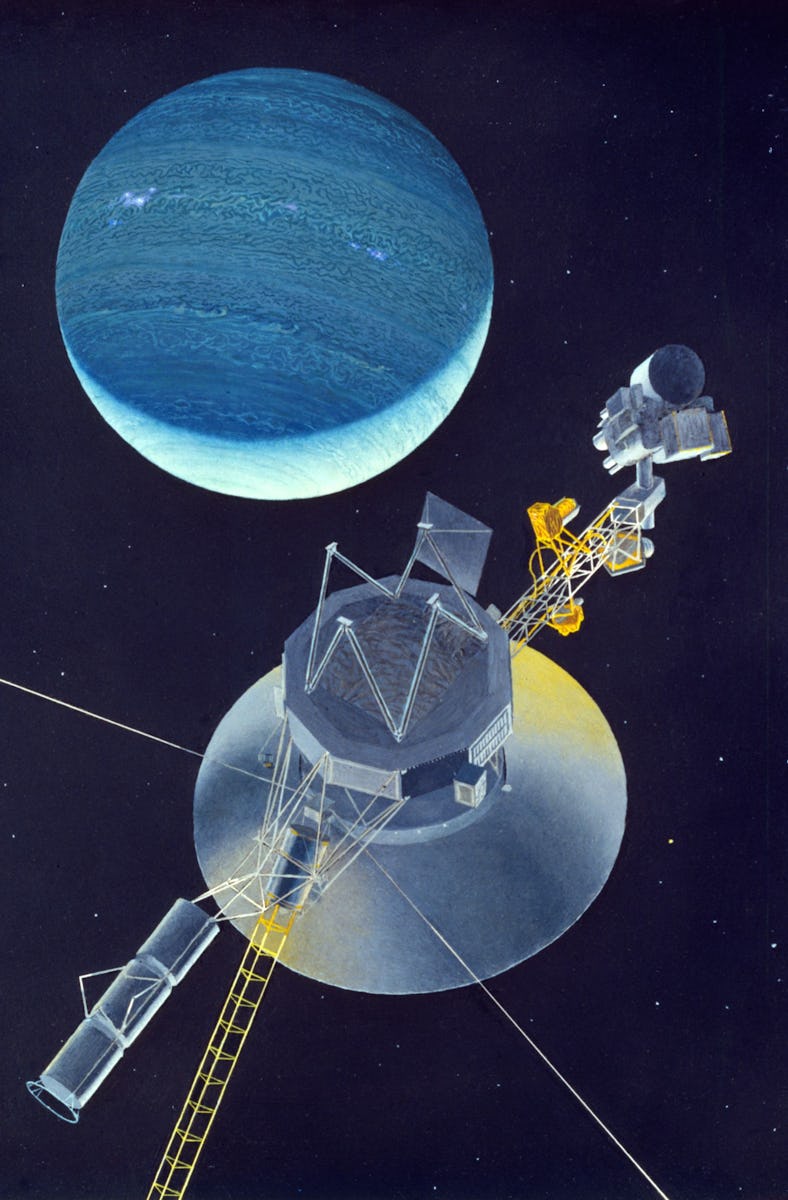NASA Can't Get Voyager 2 to Call Home — But There Might Be a Fix
NASA's Voyager 2 spacecraft hasn't called home in a while, but NASA says the spacecraft will be fine.

The Voyager 2 spacecraft may be out of touch with NASA until mid-October thanks to a slight mishap, but NASA engineers got some good news this afternoon in the form of a carrier signal from the spacecraft.
NASA recently announced that it had been cut off from the spacecraft since July 21. Voyager 2’s instruments and communications system are working normally, but its radio signals have been missing Earth by about 429 million miles because the spacecraft’s antenna is pointed two degrees in the wrong direction.
“Can You Hear Me Now?”
Voyager 2 is the second working spacecraft to fly past the edge of our Solar System.
While Voyager 2’s operators at NASA’s Jet Propulsion Laboratory were uploading a series of commands to the spacecraft on July 21, something in their programmed commands accidentally tilted its antenna about two degrees. And over 12.3 billion miles of space, a tiny two-degree error turns into an astronomical miss.
“Data being sent by the spacecraft is no longer reaching the [Deep Space Network’s antennas on Earth], and the spacecraft is not receiving commands from ground controllers,” NASA announced recently.
The Deep Space Network picked up a carrier signal — the constant broadcast from a radio transmitter, whose frequency and intensity can be changed, or modulated, to carry an actual signal — from Voyager 2 on Tuesday afternoon. Engineers hope that if the carrier signal is hitting DSN’s antennas, then messages sent from Earth will also reach Voyager 2. If that’s the case, they can send the spacecraft instructions to point its antenna in the right direction again.
If that doesn’t work, Voyager 2 will be cut off from contact with its human operators until October 15, when the spacecraft is scheduled to reset its orientation on its own.
Voyager 2 launched in August 1977, and it entered interstellar space in November 2018. About a year ago, its sister ship, Voyager 1, experienced a different communications issue, which engineers managed to troubleshoot from billions of miles away. NASA engineers have had to find increasingly creative ways to keep the two Voyager spacecraft sending data home to Earth, but if all goes well, both spacecraft will keep calling from interstellar space until sometime in 2035.